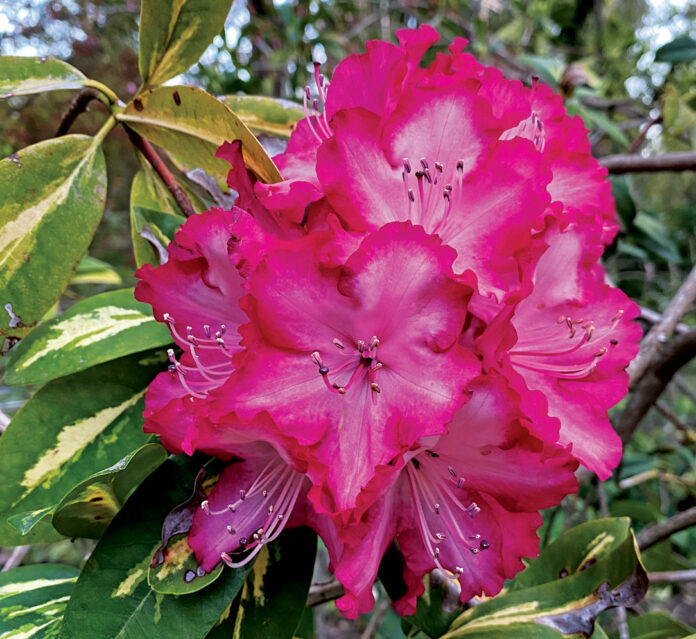Warm days, short days, cold days and hopefully rainy days—all in the fall of the year here in the Santa Cruz Mountains. It’s part of what makes our area so special to us. We are inspired by Mother Nature and our mountains. We feel a connection with nature as we enjoy our gardens. There are some easy things you can do at this time of year to extend that enjoyment. Gardening should be fun, too.
Taking cuttings of shrubs is a relatively easy and economical way to make new plants. Some plants that can be increased by hardwood cuttings include manzanita, coffeeberry, crape myrtle, pittosporum, euonymus, forsythia, spirea, viburnum and roses. Edible plants like currants, figs, grapes and quinces also make good subjects.
For deciduous plants, it’s best to take cuttings soon after the shrub drops leaves and goes dormant. Evergreen shrub cuttings can be taken now. Start by taking cuttings of year-old wood that’s about a quarter inch in diameter. Discard the top couple of inches of each stem since this unripened wood doesn’t have enough stored nutrients to survive. Cut the stems into 6-9 inch pieces. Because a cutting won’t grow if planted upside down, make the top cut at a slant, so you can keep track of it. Then dip the bottom ends in rooting hormone and tap off any excess.
You can store cuttings from dormant shrubs bundled and labeled in boxes of sand in the garage or outdoors in a well-drained trench. Each will form a callus at the base where roots will form next spring. Come spring, plant the cuttings in good soil in shade with only the top bud exposed. Water as needed and once the new plants develop leaves and increase in size, start feeding them monthly with a balanced fertilizer. By next fall your new shrubs should be well established and ready to be moved to their permanent place in the landscape.
Also you can simply pin down a stem of a plant like manzanita or rhododendron by putting a rock on it so the soil makes contact. After a year or so you will have a new plant that you can dig up and move. Other natives like ceanothus can be propagated in a peat and grit mix and will root in about 50 days if given bottom heat. Take these cuttings in January.
Stake trees if necessary. Trunks with leaning tops or those planted in very windy areas need support. To determine how high to place ties, move your hand up the trunk until the treetop straightens. I usually allow the stake to reach up into the canopy a bit so that a wind gust doesn’t snap off the trunk right at the base of the canopy. Tie the tree to the stake loosely in several places.
Trees in containers are tied tightly to the stake, but those in the ground should have some wiggle room to stimulate the trunk, which will make it stronger. This is a good time to check existing tree stakes to make sure the ties aren’t digging into the trunk and the stakes are large enough to support your tree. Remember to keep your tree staked only as long as needed and then remove the supports.
Pick last roses and add alfalfa meal or pellets, which will soak into the ground and prepare them for next spring. Don’t prune until the end of January.
Groom strawberries and mulch to deter slugs in winter.
To help protect citrus from frost damage, pull mulch back from below the canopy. This allows the ground to absorb heat during the day and release it at night.
Jan Nelson, a landscape designer and California-certified nursery professional, will answer questions about gardening in the Santa Cruz Mountains. Email her at ja******@*ol.com, or visit jannelsonlandscapedesign.com.










